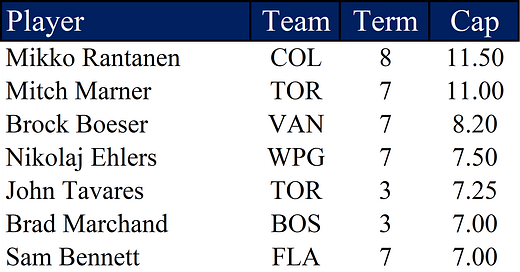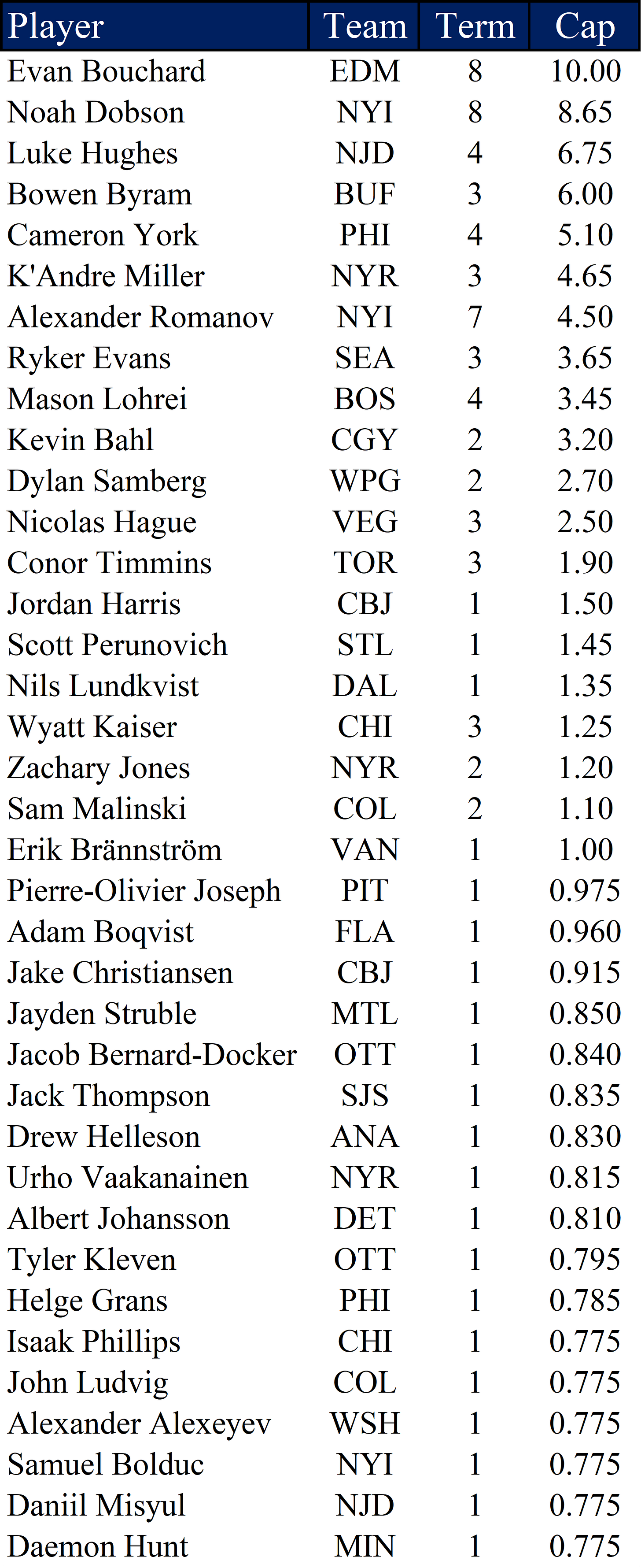Welcome to my midseason NHL free agency contract predictions, which did not consume as much time building as you might expect for nearly 320 total, given that my preliminary list posted in the summer gave me a big head start. The initial list did not have pending free agents who signed 1-year contracts last summer, so there are names here that you won’t find there. Conversely, those on the summer list who signed extensions or have not played an NHL game this season, should not appear here. If you’re a contract geek, you should enjoy my 2024 Best NHL Contracts List, though people tend to prefer reading about the Worst Contracts.
My “Expected Free Agent Value” algorithm is the primary advisor to my final prediction choice, but current salary, recent comparables, and past performance are all inputted into my brain, and that unquantifiable formula picks a number. The numbers you see below are not the EFA model results, my mind considers many more variables and vastly superior to a simple formula. That’s what I like to tell myself anyway because the simple formula tends to have a higher correlation to final outcome, but please maintain the facade that my internal value barometer is the real star of the show…
Both June’s list and the current are tuned for a $92M salary cap, but league minimum is not increasing. There was a period of time after the cap introduced where the cap doubled, but the expected stat line of a million-dollar salary stayed relatively constant. Getting a full million had a qualifying standard that barely changed as the top players continued pushing the ceiling higher and higher. If the minimum jumps from $775K to $1M next season, that doesn’t mean everyone priced between $800K and $1M in the current season will get more than $1M on contracts one year later. A higher proportion will make the minimum. The whole demographic doesn’t necessarily jump up proportionately.
This rabbit-hole has consumed me for more than quarter century, coming up on the 20-year anniversary of my Math Econ degree. There is not a steady-state equilibrium between production and salary. The talent market is a living, breathing organism of human brains making fallible decisions, with the forces of supply and demand driving prices for specific player types up and down. My algorithm gets adjusted every summer, finding a balance with an equal number of observations above and below expected, but you can’t possibly account for a player taking less money for an optimal destination (unless it’s tax related, then you can produce a reliable estimate). Doing this accurately has a high degree of difficulty.








